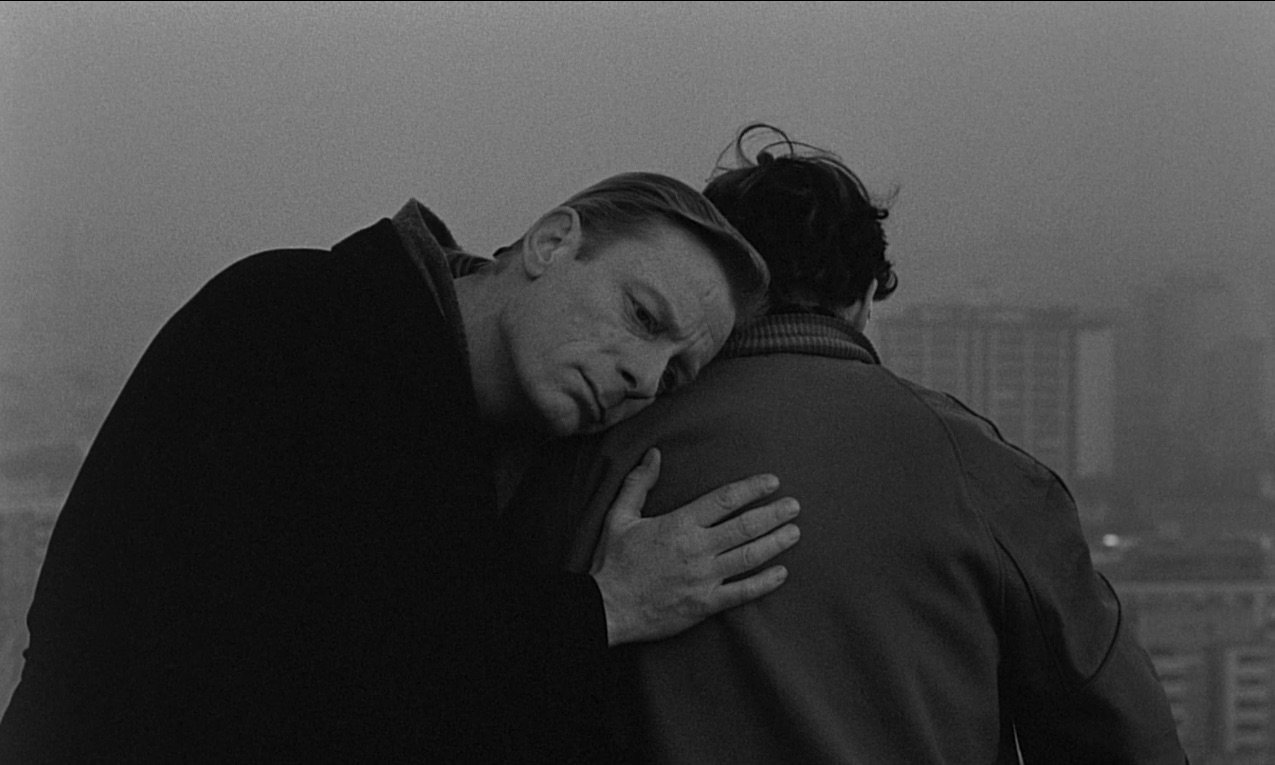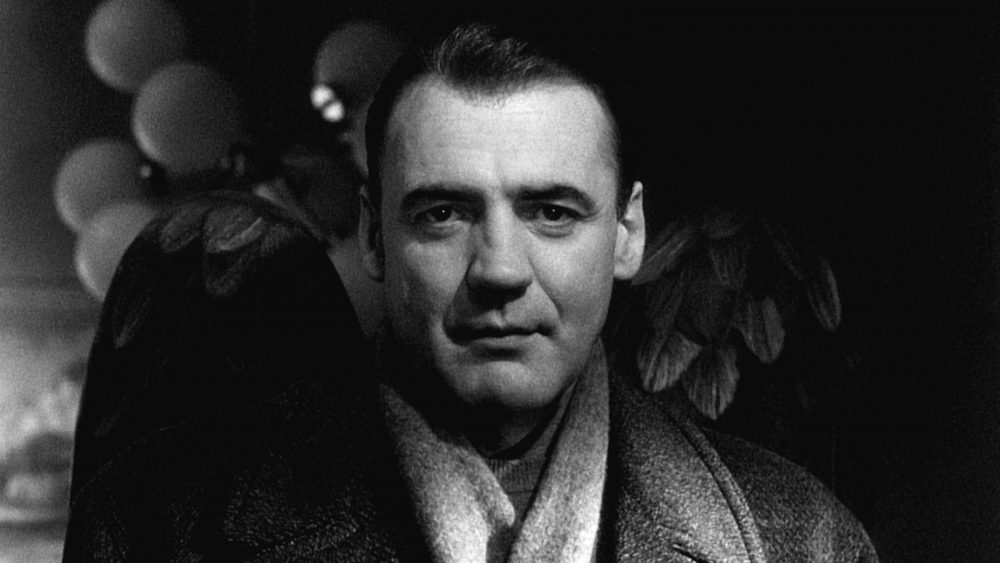The thin tip of the pen touches the white sheet of paper. On it, an angel with thick black ink scribbles lines from “Poem of Childhood” (originally: Lied Vom Kindsein) of the Austrian poet, novelist, scriptwriter and translator Peter Handke, in the introductory moments of the film “Wings of Desire” (originally: Der Himmel über Berlin) by Wim Wenders.
Then the awakening, in Berlin. It’s the end of the eighties, the Wall is still there. People in the western part of the city live their average lives, walking with their heads down, some of them looking ahead. No one except children looks up what is happening in the sky, or the tops of city skyscrapers, statutes and churches.

Adults only care about their worries. For a large part of them, there is too much small everyday problems like “There is nothing to watch on TV” or “How do I put a refrigerator and a washing machine here” … Only rare have thoughts about infinitely complex questions that they neither know the answer nor will ever find it out. There is no significant difference between these two groups of people at the end of the day because no one can hear their thoughts. No one but the angels who observe them, partly from a distance (skyscrapers and statues), partly directly moving among them, through the city streets.
“Wings of Desire” follows Damiel and Cassiel, two angels who wander the earth far before the first being emerged from the water on land. Their daily routine is talking about historical and everyday events, fascinating over simple moments of human life. Cassiel, for instance currently is fascinated by the old man, Homer who is still searching for the meaning of life. Damiel, on the other hand, follows Marion the trapeze artist, in a circus that will soon leave Berlin. Looking at Marion, Damiel is thinking of giving up his wings and becoming a mortal.
Divine poetry
Synopsis for “Wings of Desire “sounds extremely simple, right? It perfectly fits into the clichéd dramatic structure, the exposition about the angels who walk among us here on earth, then the introductory about the desire of immortal for an imperfect life, and well then, we just trace this angel’s journey for love… However, Wenders deviates from this, he mostly rejects general rules of drama structure to which we are accustomed and shapes his film mostly by concepts that are specific to poetry.
Instead of it, Wenders serves us with these inner human monologues, the movement and the action of angels beyond the characteristic behaviour of the mortals, and their „immortal-alike “dialogues that are characteristically more experiences than the events … All presented, however, does not narrate the story of the film independently. That is where we as viewers take a great part of it. Each of us builds up and explains the relationship between Angel Cassiel and old man Homer. Each of us decides whether the angels try to comfort people with their physical contact, or are they just curiously trying to feel troubles of humanity themselves.
Looking at the angel’s eyes
Winders also gives us a series of secondary stories, casually shattered along the main film narrative… A man on a subway thinking that he has lost everything in his life, the thoughts of a suicidal young man before a final leap, a simple desires of one of the extras on the film set, that was chosen by the famous actor Peter Falk to get drawn into his notebook, the fears of a person who just experienced a road accident … these are just some of them.
As we are watching the film from the position of angel’s, we go around the events and subconsciously pick up or leave these secondary stories. We just treat them „angelically“. In accordance with desires, lusts, expectations and emotional states, each viewer recognizes for himself how much a short encounter and touch in the film is significant and how all these minor stories are building into and forming a larger narrative.
Overall it is easy to admit that “Wings of Desire” is very far from the shallow romantic story of the encounter between the angel and the mortal we get in the synopsis itself. It is a film about observation, about the ability to better understand and perceive the world by watching and listening to everything that is happening around us. This is best manifested precisely when Damiel first sees that he sees Marion (as well as with unusual encounters of angels with Peter Falk).
A quarter of the movie has already passed, and the film protagonist finds a fascination in a person who, when we look at her, could hardly be said to deviate from any other mortal in the film. Why a fascination over this girl working in a circus? What makes her different or special? Just the way she is perceiving Berlin.
A coloured world of mortality
Because Marion has this rare ability to look around, notice and gets amazed by her surroundings, Wenders opens the film world by giving us a chance to observe it through her eyes. Watching the world through the eyes of angels, everything is black and white, but in a scene where Damiel watches a girl practising her act, suddenly the colours of the world appear, for just a few moments. As we go further along with the film, this happens more frequent. Clarification what do colours mean we get just a few minutes later, within the same sequence.
Marion is in her room, lying on the bed and listening to Nick Cave’s „Carny“. Damiel stands beside her and listens to her deepest feelings about Berlin, herself and love. In a monologue in which she talks about the world of the closed eyelids and the world of colour, the world of fame and the need for love, the black and white shot gets saturated.
Behind closed eyes… close your eyes once more.
Then even the stones come alive.
To be close to the colours. The colours.
Neon lights in the evening sky… the red-and-yellow train.
l just have to be ready, and every man in the world will look at me.
Longing… longing for a wave of love to swell up in me.
That’s what makes me so clumsy, the lack of pleasure.
A desire to love… The desire to love!
Skies over Berlin
Why is “Wing of Desire” relevant even today, over 30 years after his premiere? Why do cinemas still feel the need to show this film on the silver screen? Yes, it’s a film that got sequel “Until the End of the World” and even American remake named “City of Angels”. But let’s be honest, Wenders has a lot of great and complex work like “Paris, Texas”, “The American Friend”, “Pina” that does not get the same attention as „Wings“.
Perhaps the better question is whether and how much the world has changed over a period of three decades? Except for the fall of the Wall, did something change deep within the people? Do we still think the same way? Do the same things concern and accompany our everyday lives? Today walking the streets of Berlin does not look much different from walking them during the ’80s. There are a bit more buildings, and yes, of course, there is also more technology. Maybe people are now looking at their mobile phones as they walk the streets. Maybe they read e-books and browse the internet while using the metro, instead of reading newspapers and regular books.
People still live average lives. They are still walking with their heads down, some of them perhaps looking ahead. Children are the only ones who still raise their heads and look into skies, but they also do it less often now. Adults as well as always worry about their everyday problems. Only rare have thoughts about infinitely complex questions that they neither know the answer nor will ever find it out. There is no significant difference between these two groups of people at the end of the day because no one can hear their thoughts. No one but perhaps the angels…


